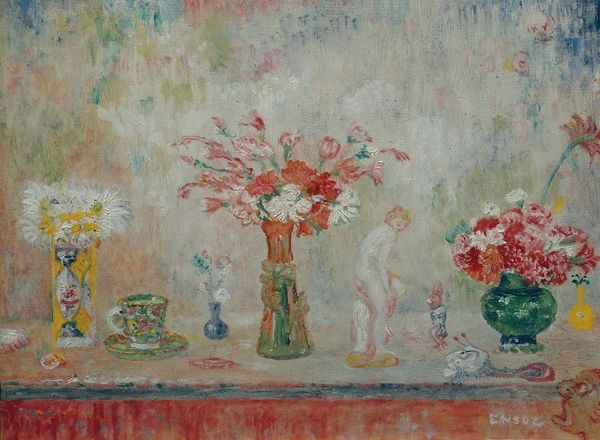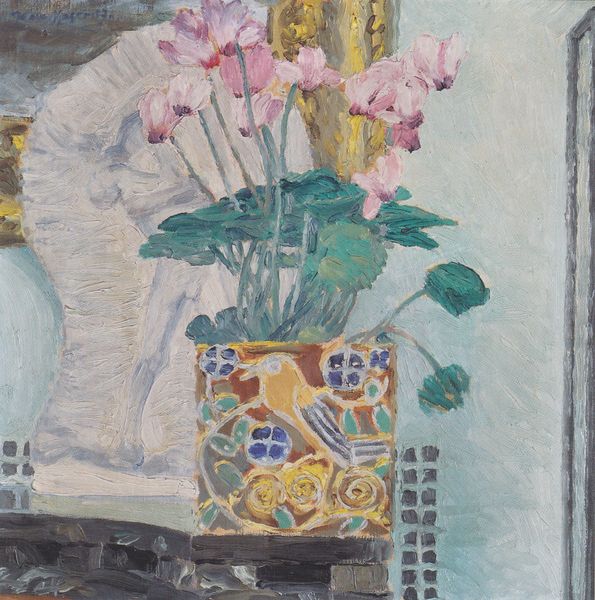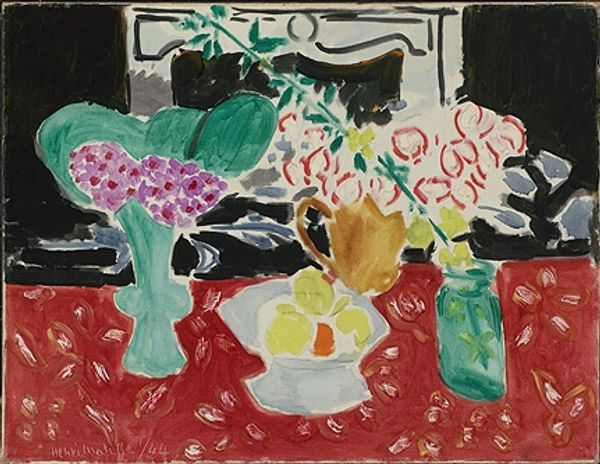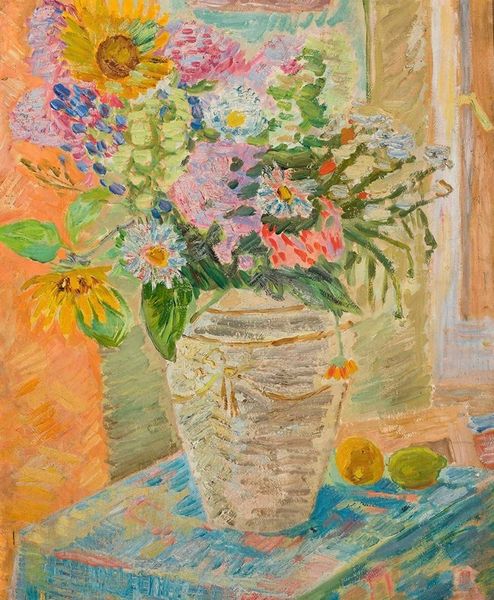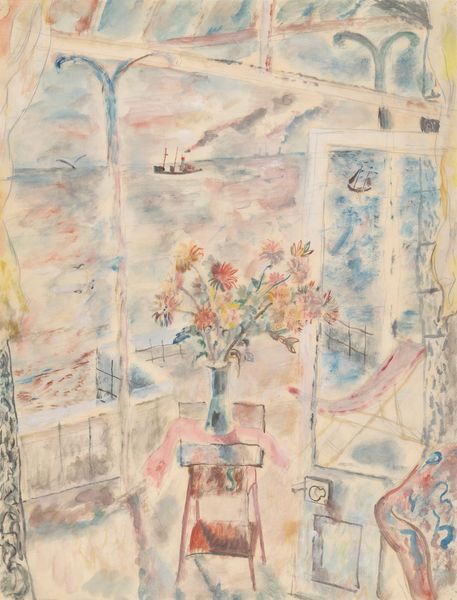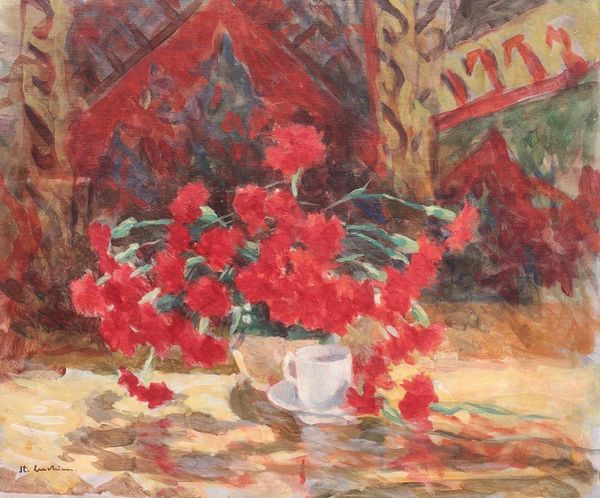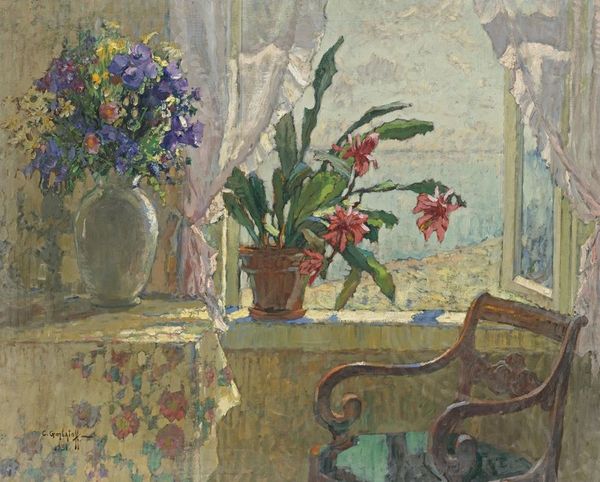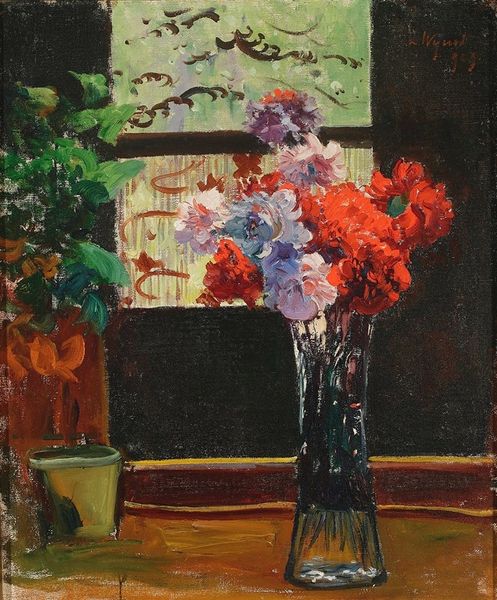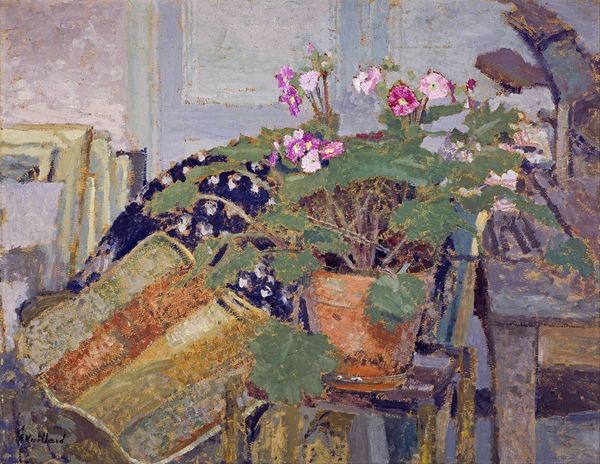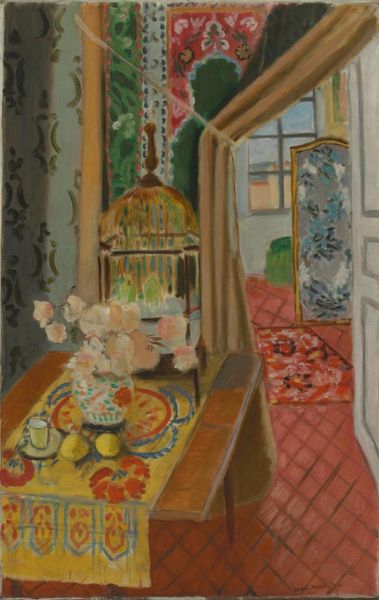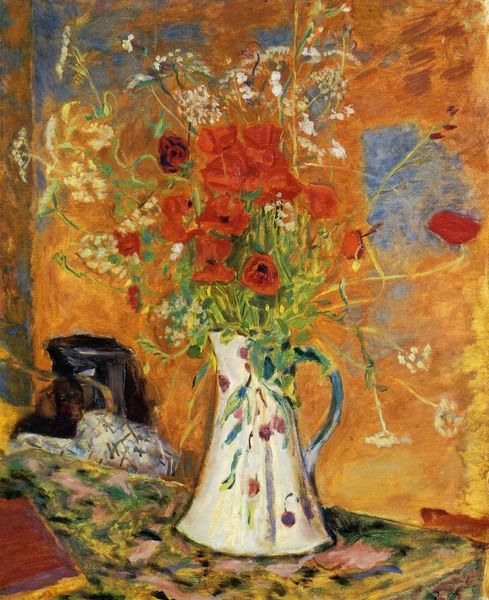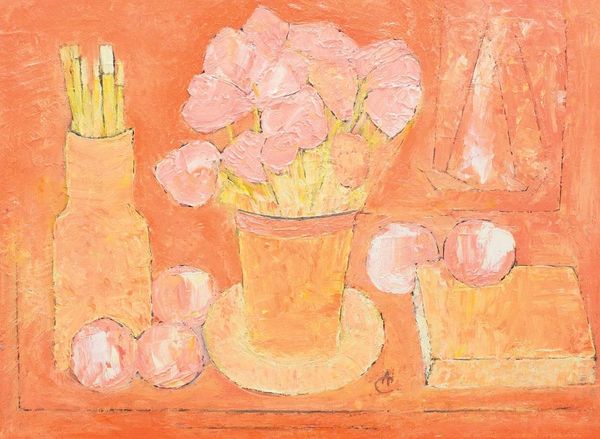
Copyright: Public Domain: Artvee
Curator: We're looking at "Azaleas," a watercolor and painting by James Ensor, likely created between 1920 and 1930. It’s an intimate still life, full of light and color. Editor: My first impression is the tactile quality, despite it being a watercolor. The visible strokes create a sense of texture. It looks almost like pastel or chalk in its application. I wonder about the paper's tooth. Curator: Indeed. Ensor, though considered a post-impressionist, displays strong symbolism here, especially considering his societal critiques in earlier works. The bourgeois domestic scene of potted plants and indoor tranquility became a safe haven of production as Europe navigated the interwar years. This motif became much more prevalent for him at this time, representing something of a retreat from public life. Editor: I’m more interested in that basket. The labor involved in creating a woven object contrasts sharply with the readily available ceramic planter. Does this suggest something about value? How we assign worth based on labor and production? The wicker, humble yet functional, sits in juxtaposition to these somewhat decorative blooms. Curator: A compelling reading. But isn’t it possible that this "bourgeois" aesthetic allowed Ensor a way to explore new perspectives without fully abandoning his subversive edge? A critique from within, if you will. His use of impasto is interesting, especially combined with such delicate watercolor techniques; how would you describe it? Editor: Thickly applied, even in a medium not known for it. Almost sculptural. It underscores the materiality of the paint itself. Look at how he renders the azaleas. It's not just about representation; it’s about building the flower form with layers of pigment and texture, celebrating craft within "high" art. Ensor also contrasts, rather surprisingly, the translucence and the opacity inherent in the watercolor painting. Curator: A fascinating point, it truly encapsulates the artist’s stylistic transition during this period, moving into one of inward contemplation and relative peace. Editor: So while you examine what he's trying to say with the painting, I wonder what material impact creating a new body of work had on Ensor himself? Curator: A very important and telling question. Editor: Every artwork carries within it the story of labor, a value judgment, or perhaps simply an effort. Perhaps even more so than societal observations, sometimes what speaks loudest is just a collection of these combined marks.
Comments
No comments
Be the first to comment and join the conversation on the ultimate creative platform.
